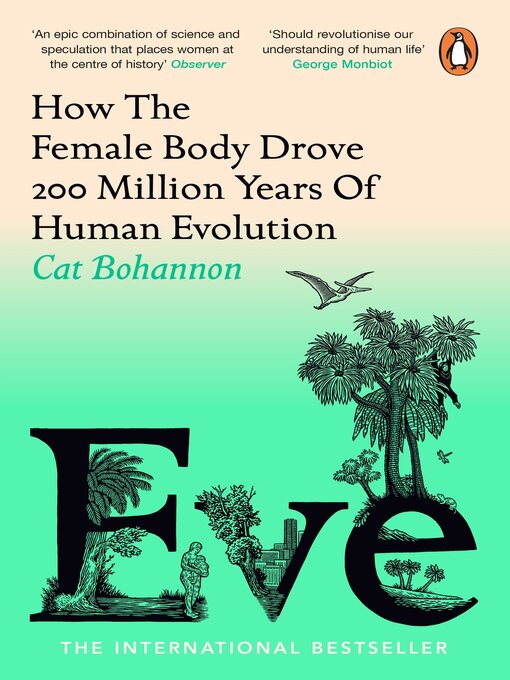A NEW YORK TIMES BESTSELLER
LONGLISTED FOR THE WOMEN'S PRIZE FOR NON-FICTION 2024
SHORTLISTED FOR THE ROYAL SOCIETY TRIVEDI SCIENCE BOOK PRIZE 2024
FOYLE'S NON-FICTION BOOK OF THE YEAR 2023
LONGLISTED FOR BLACKWELL'S NON-FICTION BOOK OF THE YEAR 2023
ONE OF THE GUARDIAN'S BEST IDEAS BOOKS OF 2023
ONE OF THE TELEGRAPH'S FIFTY BEST BOOKS OF 2023
ONE OF PROSPECT'S BOOKS OF THE YEAR 2023
ONE OF DUA LIPA'S SERVICE95 RECOMMENDATIONS FOR '5 INSPIRING READS TO KICK START THE NEW YEAR'
'Funny and very important' Chris van Tulleken, bestseling author of Ultra-Processed People
'Educates and emboldens' Bonnie Garmus, bestselling author of Lessons in Chemistry
'Should revolutionise our understanding of human life' George Monbiot, bestselling author of Regenesis
'A vast and revolutionary history of female evolution' Sunday Times
How did wet nurses drive civilization? Are women always the weaker sex? Is sexism useful for evolution? And are our bodies at war with our babies?
In Eve, Cat Bohannon answers questions scientists should have been addressing for decades. With boundless curiosity and sharp wit, she covers the past 200 million years to explain the specific science behind the development of the female sex. Eve is not only a sweeping revision of human history, it's an urgent and necessary corrective for a world that has focused primarily on the male body for far too long. Bohannon's findings, including everything from the way C-sections in the industrialized world are rearranging women's pelvic shape to the surprising similarities between pus and breast milk, will completely change what you think you know about evolution and why Homo sapiens have become such a successful and dominant species, from tool use to city building to the development of language.
- New eBook additions
- Top Titles Available Now
- Try something different
- New kids additions
- New teen additions
- Health & Wellbeing
- Real Men Feel
- Reading Well Books on Prescription for long term conditions
- Reading Well Books on Prescription for mental health
- Reading Well Books on Prescription for dementia
- I'm Worth A Million in Prizes
- Who Do You Think You Are?
- anyone, anywhere, any time
- See all ebooks collections
- Available now
- New audiobook additions
- New kids additions
- New teen additions
- Top Titles Available Now
- Try something different
- Classic Listening
- Mr. Bond. I've been expecting you...
- Where to start with Virginia Woolf
- Language Learning
- See all audiobooks collections

